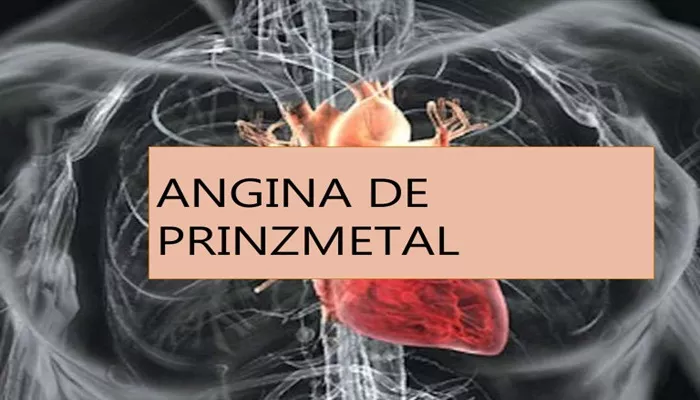Prinzmetal angina, also known as variant angina or vasospastic angina, is a rare but important form of chest pain caused by spasms in the coronary arteries. Unlike typical angina, which usually occurs during physical exertion or emotional stress, Prinzmetal angina often happens at rest, especially during the night or early morning hours. This condition can cause severe chest pain and, if untreated, may lead to serious heart complications. Understanding its symptoms, causes, and treatment options is essential for effective management and improved quality of life.
What Is Prinzmetal Angina?
Prinzmetal angina is a type of angina caused by sudden spasms in the coronary arteries, which supply blood and oxygen to the heart muscle. These spasms temporarily narrow the arteries, reducing blood flow and causing chest pain or discomfort.
This condition is different from classic angina, which is typically due to atherosclerosis or blockage in the arteries. Prinzmetal angina can affect younger and otherwise healthy individuals and is sometimes linked with other vasospastic disorders like migraines or Raynaud’s phenomenon.
Symptoms of Prinzmetal Angina
The hallmark symptom of Prinzmetal angina is chest pain or pressure that usually occurs:
- At rest, often between midnight and early morning
- Suddenly and unpredictably, lasting from 5 to 30 minutes
- Severe and intense, often described as tightness, heaviness, squeezing, or burning in the chest
- Sometimes radiating to the neck, jaw, shoulders, arms, or upper abdomen
- Accompanied by shortness of breath, dizziness, or fainting in some cases
Unlike typical angina, these episodes are not triggered by physical activity but by coronary artery spasms. The pain can be relieved by medications such as nitroglycerin.
Causes And Risk Factors
Prinzmetal angina results from spasms of the coronary arteries. Several factors can trigger or contribute to these spasms:
Smoking: A major risk factor that irritates blood vessels and promotes spasms
Medications: Certain drugs like migraine treatments (triptans), decongestants, and some chemotherapy agents can provoke spasms
Recreational drugs: Cocaine and other stimulants are known triggers
Cold exposure: Extreme cold can cause blood vessels to constrict
Stress: Emotional or physical stress may increase catecholamine levels, promoting spasms
Other conditions: People with high cholesterol, high blood pressure, or vasospastic disorders such as migraines and Raynaud’s phenomenon are at higher risk
Genetic factors may play a role, as the condition is more common in some populations, such as Japanese individuals, though it is generally not considered hereditary.
Diagnosis of Prinzmetal Angina
Diagnosing Prinzmetal angina can be challenging because coronary artery spasms may not show up on standard tests.
Common diagnostic approaches include:
Electrocardiogram (EKG): May show transient changes during an episode
Coronary angiography: To visualize arteries and rule out blockages
Provocative testing: Using agents like acetylcholine or ergonovine to induce spasms under controlled conditions, monitored by EKG and symptoms
Blood tests and stress tests: To assess heart muscle damage and exclude other causes
Because spasms are intermittent, diagnosis often requires careful monitoring and sometimes repeated testing.
Treatment of Prinzmetal Angina
Treatment focuses on relieving symptoms, preventing spasms, and reducing risk factors.
Medications
Calcium channel blockers: These are the mainstay of treatment. They relax the smooth muscle in artery walls, preventing spasms.
Nitrates: Both short-acting (for immediate relief) and long-acting nitrates help dilate blood vessels and reduce spasm frequency.
Other agents: In some cases, potassium channel openers (e.g., nicorandil) or rho kinase inhibitors (e.g., fasudil) may be used to prevent spasms.
Medications commonly used for other types of angina, such as beta blockers and aspirin, are generally not recommended because they may worsen spasms.
Lifestyle Changes
Quit smoking: Eliminating tobacco use is crucial.
Avoid triggers: Stay away from cold exposure, recreational drugs, and medications known to cause spasms.
Manage stress: Techniques to reduce emotional and physical stress can help.
Heart-healthy habits: Maintain a balanced diet and regular exercise to promote overall cardiovascular health.
Monitoring and Follow-up
Prinzmetal angina is a chronic condition requiring ongoing care. Regular follow-ups with a cardiologist are important to adjust medications and monitor for complications such as arrhythmias or heart attacks.
Conclusion
Prinzmetal angina is a rare but significant form of chest pain caused by coronary artery spasms. It typically occurs at rest, especially at night, and presents with severe chest pain that can mimic a heart attack. Diagnosis involves specialized testing to detect artery spasms. Treatment centers on calcium channel blockers and nitrates, along with lifestyle changes like quitting smoking and avoiding triggers. With appropriate management, most patients experience good symptom control and a favorable prognosis.
Related topics:
- What Not to Eat with Atrial Fibrillation
- What to Do if Apple Watch Detects Afib
- Ventricular Bigeminy Symptoms, Causes & Treatment


